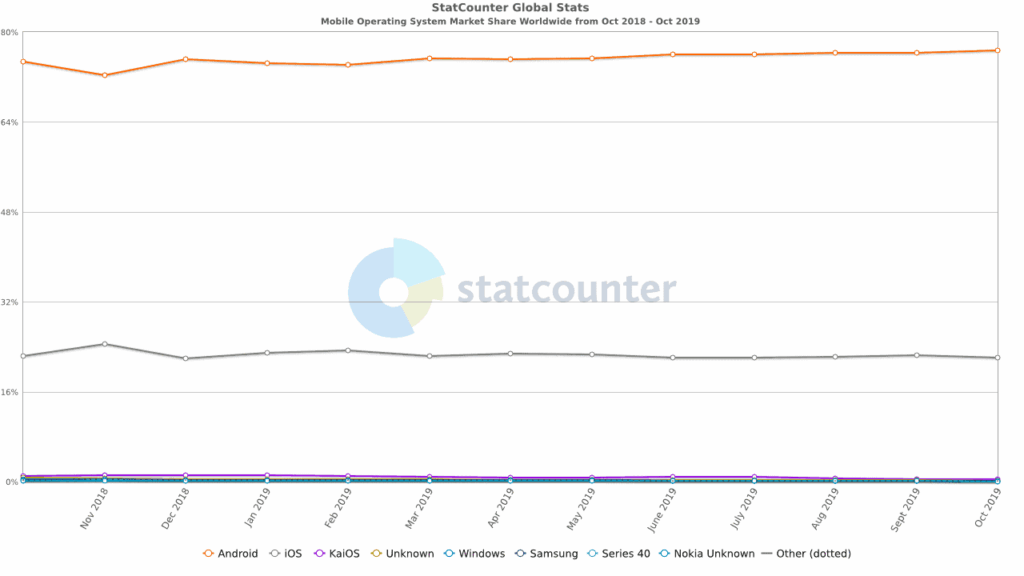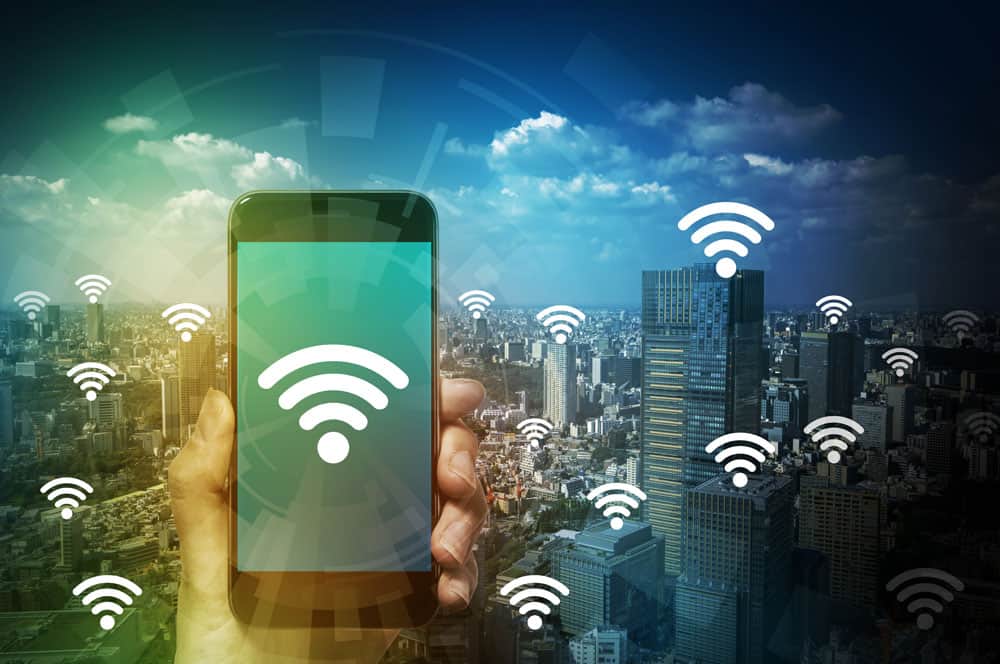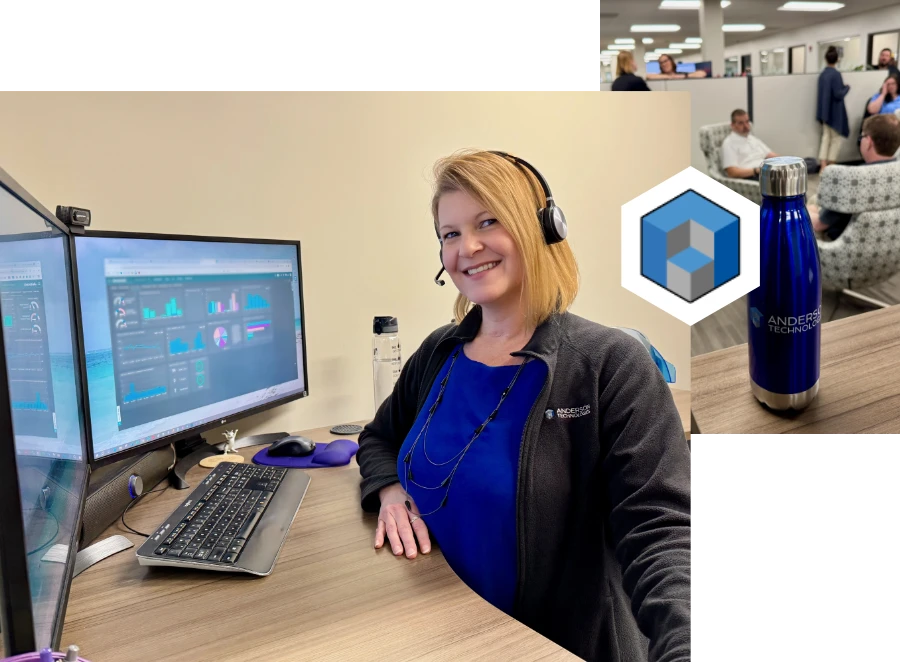Comparing Mobile Operating Systems (OS)
– T.C., Operations Manager, Property Management
Comparing Mobile Operating Systems (OS)
Ask someone which mobile operating system (OS) they prefer (or don’t) and it might feel like something out of Star Wars: a battle between the light side and dark side, with both claiming to be the Jedi. In actuality, Android and iOS are closer to being neighboring planets arguing in the Imperial Senate. Each are powerful, competent versions of what is essentially the same thing, with different features and priorities for different users, and, between the two, they are dominating the mobile OS universe. Despite this duopoly, there are a few rebel OSs out there challenging the status quo. Let’s take a look at the similarities and differences between the two big mobile OSs available, and the small companies trying to break into the mobile marketplace.

What Are the Differences Between Android and iOS?
As hardcore as fans of a particular OS can be, most features cross between Android and iOS and the differences are a matter of what the user prioritizes. Both excel in certain areas and fall behind in others. What you value in a phone will help you choose which OS is best for you or for your employees.
Security
Let’s start with a big issue. The more we do on our phones and tablets, the greater the need for our mobile devices to be secure. While there are other security-focused OSs we’ll discuss later in this article, if security is your number one priority, then iOS is the way to go. While no OS is hacker-proof, Apple’s “walled garden” approach to hardware and software and the consistent use of encryption by default makes breaking their security more difficult. In addition, the applications allowed in the App Store are vetted more rigorously than in the Play Store (more on that later). This keeps bad actors at bay and malware from being easily downloaded.
It’s also more profitable for criminals to target Android. The current worldwide market share shows Android dominating the field with more than 75% of all phones using it. With stronger security and lower market share, iOS won’t give the average cybercriminal the same return on investment.

Privacy
This is another big issue in the current digital landscape, and once again iOS is the better choice. Apple markets itself as the company that values your privacy and will not read or store unencrypted texts or recordings on their servers. They have even gone to court to prevent law enforcement from forcing them to open locked iPhones to protect privacy rights. Though their privacy policies aren’t perfect—like other companies they used third parties to listen to and grade users’ voice recordings to improve the Siri voice assistant—Apple has moved to improve them when concerns are raised.
Android doesn’t have the same privacy track record. In fact, Google, which acquired the Android OS in 2005, is well known for tracking users across devices and selling that information to advertisers. Though the user’s data is anonymized, Google often collects information that users are not aware of. Reducing the amount of data tracked is possible, but it’s not an easy process to implement.
Affordability
Android is, without question, the better choice when it comes to affordability. Since Apple controls both its hardware and software, the only phones with iOS are iPhones, and the selection is both limited and expensive. The newest models range in price from $700–$1500. The cheapest iPhone Apple currently lists is the iPhone 8, and without a trade-in it starts at $450. Older models are still available for less, but the hardware quickly becomes outdated.
Android has a far more diverse selection of phones since many different hardware developers create phones using the Android OS. While the newest flagship models for many of these companies can reach prices comparable to Apple’s, there are many mid-range phones ($400–$700) and cheap phones ($300 or less) for the budget conscious user.
Customization
If your priority is the ability to customize your phone to exactly how you want it, then Android is the way to go. Android offers far more customization options than iOS. Simple changes such as themes, widgets, and the ability the manipulate the home screen are all available. More than that, Android users can install a custom launcher to change the way they interact with their OS, and even mimic iOS if the user wants. While iOS offers some customization options, these are far more restricted than what an Android phone offers.
Apps
This category depends entirely on what you want from your apps. While most major apps are on both OSs, the Apple App Store generally gets new apps first—or exclusively—and those apps can be of higher quality. This is because of the consistent design and software across all iOS products. Developers find it more complicated to create apps for Android because of its larger hardware selection and varying OS versions still in use.
The trade off is that Android has a greater selection of apps in the Play Store and the ability to side load apps or use other app stores. On iOS, the only way to get an app is through the App Store, which means that apps Apple doesn’t approve can’t be downloaded even if the user wants it. This results in fewer chances of malware or phishing through apps, but also a smaller selection and less customization for the user. This can also result in problems for developers. Apple has recently been accused of unfairly promoting their own products over competitors in the App Store.

Ease of Use
Overall, iOS is easier to use than Android because of how streamlined it is and because it owns all the hardware iOS is used on. Apple’s “walled garden” approach uses the same software across all devices, so using iOS becomes intuitive and interconnected with other Apple products. Users can easily begin a function on one device and finish it on another. There is never a concern that an Apple product isn’t compatible with iOS.
Manufacturers of Android phones are able to add their own software (often called bloatware) that may be inferior to the standard apps and sometimes impossible to remove. This means the user’s experience using one brand will be different from another despite both being Android.
The one area where Android surpasses iOS in ease of use is in transferring files. To transfer files from an iPhone you have to go through Apple’s software, which might be difficult if you don’t use Apple products exclusively. Android phones can be connected to another computer and easily transfer files the same way you would with a flash drive.
Compatibility
Once again, this comes down to whether or not you want a “walled garden” ecosystem. All Apple products are compatible with iOS, but that can get expensive quickly. There are far fewer third-party accessories and products compatible with Apple products, which is partially due to its use of the lightning port instead of the more universal USB-C. That said, Apple does dominate the field on the range of connected smart device accessories available.
Android’s freer ecosystem means that not everything will be compatible with all versions of the OS, but far more companies and products can be used. This makes the accessories cheaper, even if the user has to go through extra effort to ensure it works on their phone.
Hardware
Since the OS is closely tied to the machine it’s on, we need to look at the hardware. Apple markets itself for style and quality. It’s easy to identify an iPhone as an iPhone and expect it will function for a long time to come. But that control over the hardware is a double-edged sword. If Apple chooses to remove a feature the user liked—such as the 3.5mm headphone jack—the user has no other options available. The hardware is also so specialized that even simple repairs like changing a battery require the work of certified technicians, which is expensive and a problem for people who don’t live near an Apple retailer.
The multiple manufacturers of Android phones produce a variety of choices for users to pick from. If one company removes a feature the user likes, other brands or models are available that still have it. This isn’t a perfect system. The cheaper end of the Android market suffers from low-quality phones Apple would never allow, and with so many choices, it can be difficult to tell what makes one phone better than another.
Support
If support is important to you, iOS is the better choice. Apple has multiple avenues for resolving issues with their products, and offers AppleCare to continue support past the warranty timeframe. Receiving iOS updates is also far easier, which keeps even older models up-to-date with security patches.
Android doesn’t have a single support line to contact with problems, and getting help from the manufacturer or your carrier can be difficult. Also, since updates are pushed by manufacturer rather than the OS itself, different phones may receive updates at different times and legacy updates for older models often end much sooner than iOS updates.
One last thing to consider when purchasing your next phone is which OS you’re familiar with. Switching phones is already a hassle, but adding a new OS with settings and controls you’re not used to will only make it worse. And if you’re moving from iOS to Android, the move will be more difficult as you’ll have to remove everything from the Apple’s ecosystem in the process. If your priorities value Android over iOS or vice versa, then it may be worth the trouble, but if not, sticking with your current OS will make your life easier.
The Rebels: Can Third Party OSs Compete with Android and iOS?
If neither of these options appeal to you, either for their exclusivity or security and privacy concerns, there are a few more options out there. Some are Android-based, meaning that they use the non-Google-infused open source code Android is made from and creates a new “forked” OS. Unfortunately, many of these are not easy to obtain for the non-technical or US-based consumer.
Sirin OS
Sirin OS comes on its own custom phone and is made for people who want security above all else. Built on blockchain technology, this OS includes its own secure cryptocurrency wallet and military-grade cybersecurity protections, including a machine-learning Intrusion Prevention System for real-time protection. All calls, messages, and emails have automatic end-to-end encryption. If security is your top priority, Sirin OS is the way to go, but a single phone retails for upwards of $1,000.
KaiOS
KaiOS is on the other end of the price spectrum. One of the cheapest phone options available right now, KaiOS turns cheap, non-touch-capable phones into limited-capability smartphones. KaiOS is most common in emerging smartphone markets.
PureOS
PureOS has both privacy and security in mind, and is neither iOS- nor Android-based. PureOS already exists for personal computers and is now being released on the Librem 5 phone starting at $700. It promises lifetime updates to extend the life of your phone. The downside is that the phone version of PureOS is still new and not all features are available. Future updates are planned to add common features to the OS.
/e/ and LineageOS
Both /e/ and LineageOS are based on the same ‘forked’ open source version of Android, making it familiar to current Android users. Both are privacy-focused. LineageOS can be put on older phone models to secure them with constant updates the manufacturer won’t provide, and /e/ boasts being entirely Google free. Unfortunately, /e/ is only preloaded on phones available in the EU, and LineageOS doesn’t have any dedicated hardware. Both can be downloaded and installed by the user, though.
Despite the availability of third-party OSs, for most consumers Android and iOS are the only practical options. The choice comes down to what features you prioritize in your phone. Android has affordability, choice, and customization options but comes with greater risk of outside intrusion. Apple’s “walled garden” provides greater privacy and security protections, but if you don’t like what Apple offers, there’s not much you can do about it.
Choosing an OS is complicated. Ultimately, there isn’t a light or dark side of the OS Force. The choice comes down to specific values and what most benefits you and your business.
A Free IT Assessment Can Help You Identify Risks
Your organization is too valuable to not have modern IT systems to keep it safe and make it scalable. A free Anderson Technologies IT Assessment will identify where you are the most vulnerable and recommend the areas to address first, affording you the most protection and peace of mind.

